Fair winds for climate forecasts in Mozambique
Mozambique has faced a wide range of climate shocks in recent years. It was hit by Cyclone Dineo in 2017, Cyclones Idai and Kenneth in 2019, Cyclone Eloise in 2021 and, most recently, Tropical Storm Ana, Tropical Depression Dumako and Cyclone Gombe in 2022. Going back to 2015/16, Mozambique faced its worst drought in years, which affected up to 2.3 million people. Subsequent cyclical dry spells have depleted water reserves in the south of the country, causing severe water shortages in cities including the capital Maputo. The country’s water reserves only returned to full capacity after an intense rainy period in February 2021, which in turn caused localized flooding.
In such a complex context, it is crucial to improve forecasting systems in Mozambique, to anticipate climate shocks and prepare the government and communities accordingly. This will also help to build resilience and create the conditions needed for sustainable development in Mozambique.
We are in a country with a complex climate. El Niño causes rainfall in the north and below-normal rainfall in the southern parts. How do we deliver information in a country like this? It is challenging.
Collaboration between WFP and INAM
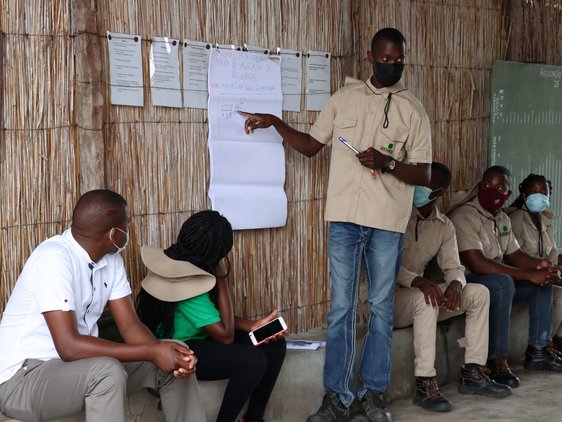
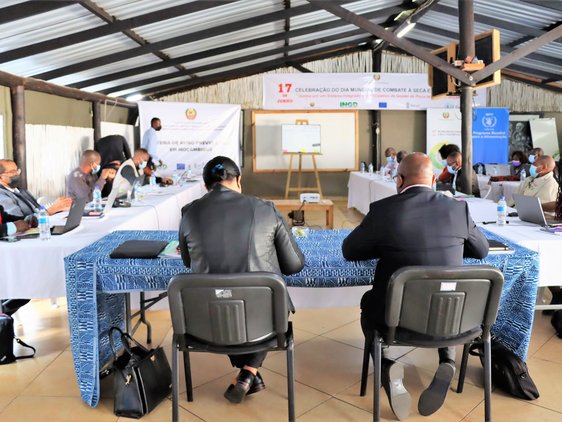
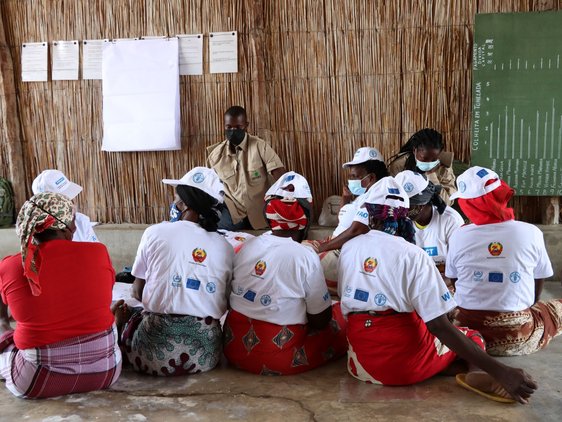
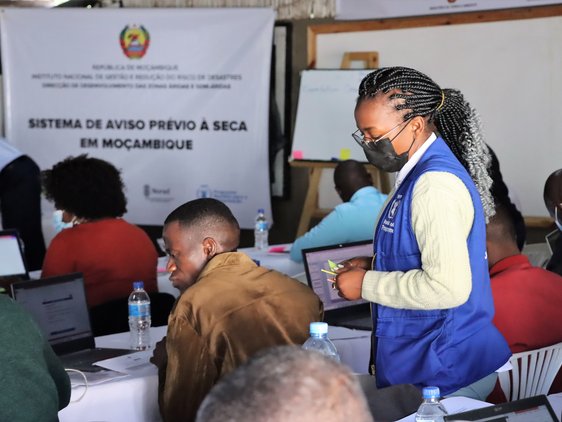
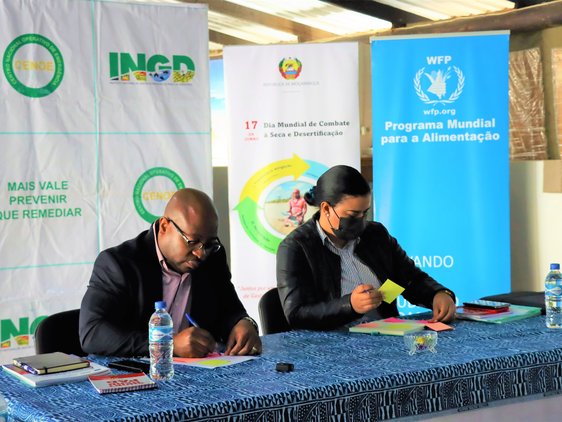

Implementing anticipatory action in Mozambique
In 2018, the World Food Programme (WFP) in Mozambique introduced a resilience-building approach. This goes beyond its humanitarian and development interventions and focuses on managing climate-related risks and strengthening efforts to adapt to the climate crisis. It does this through supporting the most vulnerable communities while also building the capacity of the national institutions to anticipate and prepare for climate disasters.
As part of this approach, WFP has partnered with the Mozambican government to enhance its ability to implement anticipatory action. This has included training and technical assistance on planning for anticipatory action, and on integrating forecast-based actions into national systems to anticipate, mitigate and protect people from the impacts of climate-related disasters.
WFP started this process by organizing a consultation with relevant national stakeholders. This established that the Mozambique National Institute of Meteorology (INAM) needed support with drought-monitoring and forecast services. Such support was crucial: “[INAM] has a core role in the early warning system in the country,” says Bernardino Nhantumbo, INAM’s climate researcher.
Working in collaboration: WFP and INAM
Since 2018, WFP’s research assessment and monitoring unit has been working closely with INAM on projects to strengthen Mozambique’s national climate-forecasting and weather-monitoring systems. Initially, activities focused on enhancing seasonal-monitoring capacities, in particular for drought. “This is one of the most fruitful collaborations we have ever had, and the expectations [were] high,” recalls Bernardino Nhantumbo. Work included:
- digitizing over 40 years’ worth of weather data from INAM’s physical archive
- installing additional rain gauges and automatic weather stations
- setting up a new system for meteorological data collection and analysis
- integrating new weather and climate indicators into INAM’s portfolio
- creating a seasonal monitoring system
- supporting the production and dissemination of regular climate bulletins.
This fruitful partnership enabled both WFP and INAM to expand their work towards seasonal drought forecasting. This in turn helped to advance the anticipatory action agenda in the country through the provision of more comprehensive and reliable information. As a result, INAM is now able to offer a variety of products and services to stakeholders.
“We began with PICSA [participatory integrated climate services for agriculture], a methodology developed by the University of Reading, to deliver climate information to local farmers,” explains Bernardino. “Then, the drought monitoring helped us set up a monthly climate bulletin; now, we are progressing to drought forecasting. We are learning, and from the feedback we are getting from our stakeholders, we are on the right path.”
The most impressive recent achievement from this collaboration is the State of the Climate Report for Mozambique. Released in March 2022, this was the first such report from the country to be used as a reliable source of information by the World Meteorological Organization.
Funds from the European Union, the EU’s Civil Protection and Humanitarian Aid Operations (ECHO) and the Norwegian Agency for Development Cooperation (Norad) have also supported WFP and INAM to develop a drought-monitoring routine, with national and subnational coverage. The INAM team incorporated innovative approaches that allow them to anticipate and detect weather anomalies quickly, and to disseminate this information in a timely manner. By providing more accurate information to the public and other national institutions, INAM supports them to better plan and monitor the anticipated impacts of the weather on sectors including agriculture, health, water and disaster risk management.
The challenge of issuing forecasts during COVID-19
The first seasonal monitoring bulletin was issued in December 2019, and the technical working group for the drought early-warning system held its first meeting in February 2020. However, the COVID-19 pandemic soon threatened the close collaboration that had been established. To continue during the worst phases of the pandemic, WFP and INAM planned for remote support, online training sessions and on-the-job assistance when needed.
Some staff were working from home, others from empty offices – and most were relying on their network hotspots. “We were not used to hybrid work,” admits Gabriela Nobre, WFP’s climate risk specialist. “The lack of face-to-face interaction slowed down the process. [The WFP office in Mozambique] made an effort to keep the conversations running, even with social distancing.”
But, as Gabriela notes, challenges also come with opportunities. The lessons learned show the importance of partners building a relationship based on trust and continuous communication to keep teams motivated. “We started before the COVID-19 pandemic and there is a strong commitment from both sides. As a result, the pandemic has not prevented us from making progress,” affirms Bernardino Nhantumbo.
We were not used to hybrid work... The lack of face-to-face interaction slowed down the process. [The WFP office in Mozambique] made an effort to keep the conversations running, even with social distancing.
Looking ahead
Given the encouraging results so far, WFP plans to continue supporting local institutions in Mozambique. This will further strengthen the capacities of various government agencies to operationalize and manage the national drought early-warning system and help to improve drought response in the country. For example, the design of drought alerts and triggers will enable the implementation of anticipatory action for drought, which will mitigate the effects of this slow-onset disaster before its impacts are felt by the most vulnerable communities and environments.
This blog was written by Denise Colletta, communications officer, and Silvia Pieretto, programme policy officer - climate change adaptation and resilience, from the WFP Mozambique country office. It is based on interviews with Bernardino Nhantumbo, INAM’s climate researcher, and Gabriela Nobre, WFP’s climate risk specialist.
